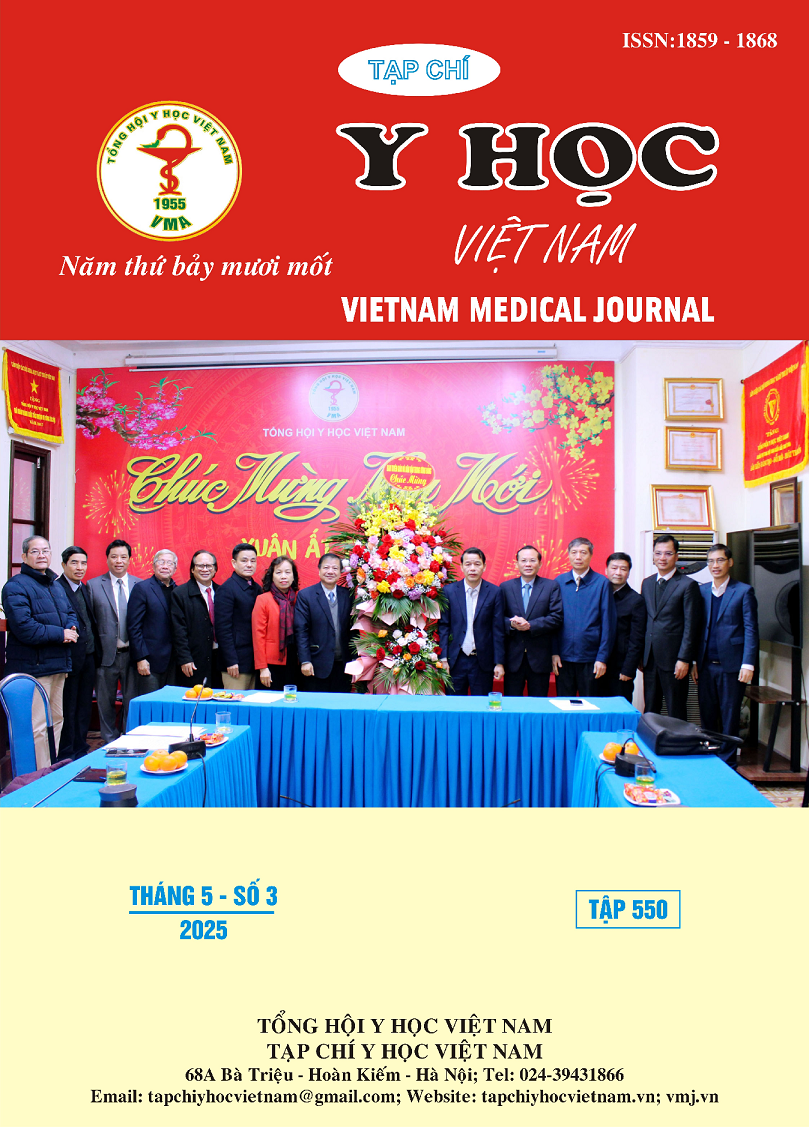NHẬN XÉT THỰC TRẠNG NUÔI ĂN QUA THÔNG DẠ DÀY CHO NGƯỜI BỆNH ĐỘT QUỴ NÃO CÓ RỐI LOẠN NUỐT VÀ ĐỀ XUẤT GIẢI PHÁP
Nội dung chính của bài viết
Tóm tắt
Nuôi dưỡng bằng thông mũi dạ dày (NGT) thường được khuyến nghị khi người bệnh đột quỵ não mắc chứng khó nuốt hoặc khi tình trạng ý thức giảm sút. Chúng tôi tiến hành nghiên cứu để tìm hiểu thực trạng nuôi ăn qua thông dạ dày cho người bệnh đột quỵ não có rối loạn nuốt và đề xuất giải pháp đảm bảo dinh dưỡng cho họ. Nghiên cứu được tiến hành trên 28 người bệnh nuôi ăn qua thông ³ 2 tuần tại trung tâm Phục hồi chức năng bệnh viện Bạch Mai. Kết quả: tỉ lệ hít sặc thức ăn 40%, viêm phổi 67,9%, BMI < 18 là 35,7%. 35,7% người bệnh giảm cân > 3 kilogram, 60,7% giảm khẩu phần ăn khi sàng lọc với MNA. Mức độ nặng của xâm nhập - hít sặc theo thang PAS khảo sát bằng VFSS có liên quan đến tăng tỷ lệ viêm phổi. Tổng điểm MBSImP ³ 13 hoặc tình trạng tồn đọng hầu họng > 2 có thể là yếu tố dự đoán khả năng cần lưu thông dạ dày khi xuất viện.
Chi tiết bài viết
Tài liệu tham khảo
2. Di Vincenzo, O.; Luisi, M. L. E.; Alicante, P.; Ballarin, G.; Biffi, B.; Gheri, C. F.; Scalfi, L. The Assessment of the Risk of Malnutrition (Undernutrition) in Stroke Patients. Nutrients 2023, 15 (3), 683. https://doi.org/10.3390/ nu15030683.
3. Rabaut, J.; Thirugnanachandran, T.; Singhal, S.; Martin, J.; Iievliev, S.; Ma, H.; Phan, T. G. Clinical Outcomes and Patient Safety of Nasogastric Tube in Acute Stroke Patients. Dysphagia 2022, 37 (6), 1732–1739. https://doi. org/10.1007/s00455-022-10437-1.
4. Langdon, P. C.; Lee, A. H.; Binns, C. W. High Incidence of Respiratory Infections in “nil by Mouth” Tube-Fed Acute Ischemic Stroke Patients. Neuroepidemiology 2009, 32 (2), 107–113. https://doi.org/10.1159/000177036.
5. Dziewas, R.; Ritter, M.; Schilling, M.; Konrad, C.; Oelenberg, S.; Nabavi, D. G.; Stögbauer, F.; Ringelstein, E. B.; Lüdemann, P. Pneumonia in Acute Stroke Patients Fed by Nasogastric Tube. J Neurol Neurosurg Psychiatry 2004, 75 (6), 852–856. https://doi.org/10.1136/ jnnp.2003.019075.
6. Vũ Đ. Đ.; Dự N. Q.; Linh T. T.; Quang4 Đ. Đ.; Linh N. T. M.; Anh U. T. V.; Thủy P. T.; Nhân N. T.; Phương Đ. V.; Giáp V. V. KHẢO SÁT TỶ LỆ VIÊM PHỔI TRÊN NGƯỜI BỆNH PHỤC HỒI CHỨC NĂNG SAU ĐỘT QUỴ NÃO CẤP. VMJ 2024, 542 (3). https://doi.org/10.51298/vmj.v542i3.11208.
7. Quyên L. T.; Dung P. T. K.; Tuấn T. V. Đánh giá một số biến chứng thường gặp trên bệnh nhân đột quỵ não cấp tại Bệnh viện Trung ương Thái Nguyên. Journal of 108 - Clinical Medicine and Phamarcy 2018.
8. Lin, Y.-N.; Chen, S.-Y.; Wang, T.-G.; Chang, Y.-C.; Chie, W.-C.; Lien, I.-N. Findings of Videofluoroscopic Swallowing Studies Are Associated with Tube Feeding Dependency at Discharge in Stroke Patients with Dysphagia. Dysphagia 2005, 20 (1), 23–31. https://doi.org/10.1007/s00455-004-0021-6.
9. Tạ, V. T.; Nguyễn, T. M.; Nguyễn, H. N.; Nguyễn, T. L. Thực trạng dinh dưỡng ở người bệnh đột quỵ não cấp điều trị tại Trung tâm đột quỵ não – Bệnh viện Trung ương Quân đội 108. Tạp chí Khoa học Điều dưỡng 2020, 3 (4), 22–27.
10. Vinh N. T. Đánh giá tình trạng dinh dưỡng và một số yếu tố liên quan ở bệnh nhân đột quỵ não cấp có rối loạn nuốt tại Khoa Đột quỵ não - Bệnh viện Trung ương Quân đội 108. Journal of 108 - Clinical Medicine and Phamarcy 2022. https://doi.org/10.52389/ydls.v17i2.1168.


